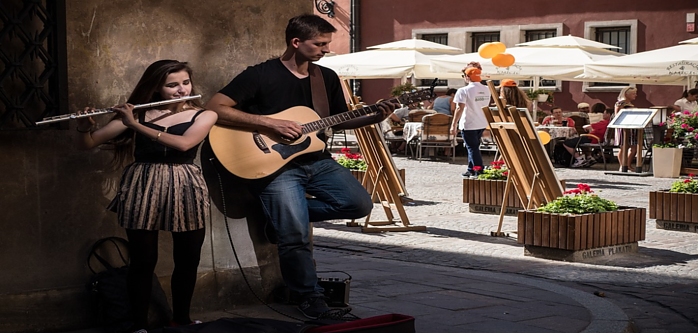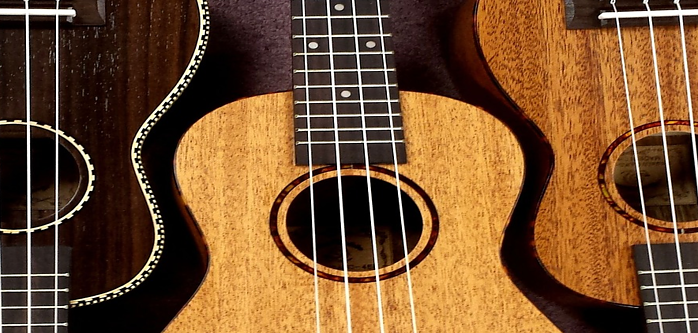
In the vast tapestry of musical genres, folk rock stands as a unique and captivating fusion that has left an indelible mark on the hearts of music enthusiasts. It’s a genre that intertwines the raw, storytelling essence of folk music with the electrifying energy of rock. Today, we embark on a journey to unravel the layers of this melodic phenomenon and explore what makes folk rock music a cherished and timeless genre.
Here’s a little transparency: Our website contains affiliate links. This means if you click and make a purchase, we may receive a small commission. Don’t worry, there’s no extra cost to you. It’s a simple way you can support our mission to bring you quality content.
Understanding the Roots: A Brief Overview
At its core, folk rock music is a hybrid genre that emerged in the mid-1960s, blending the acoustic sounds and narrative storytelling of traditional folk music with the amplified instrumentation and rhythmic drive characteristic of rock. This marriage of styles gave birth to a new musical landscape that was both rootsy and rebellious, ushering in a wave of artists who sought to bridge the gap between the old and the new.
In the early days, pioneers like Bob Dylan and The Byrds played pivotal roles in shaping the folk rock sound. Dylan, known for his poetic lyricism, introduced folk narratives into a rock context, while The Byrds, with their jangly guitars and harmonious vocals, added a rock ‘n’ roll edge to traditional folk tunes.

Key Characteristics of Folk Rock Music
Acoustic Foundations: Folk rock often features acoustic instruments like guitars, banjos, and mandolins, giving it an earthy and intimate quality. This acoustic foundation is a nod to the genre’s folk roots.
Storytelling Lyrics: Central to folk rock is the tradition of storytelling through lyrics. Artists use their music as a canvas to paint vivid tales of life, love, and societal observations, connecting with listeners on a deeply emotional level.
Harmonies and Melodies: The genre is marked by rich vocal harmonies and memorable melodies. These elements, influenced by folk traditions, contribute to the genre’s accessibility and widespread appeal.
Electric Accents: In contrast to traditional folk, folk rock incorporates electric instruments such as electric guitars and bass, lending a dynamic and energetic edge to the sound.
Influential Figures in Folk Rock
Bob Dylan: Often referred to as the “voice of a generation,” Bob Dylan is a cornerstone figure in folk rock music. His album “Bringing It All Back Home” (1965) is considered a watershed moment in the genre’s evolution.
The Byrds: With their groundbreaking cover of Dylan’s “Mr. Tambourine Man,” The Byrds propelled folk rock into mainstream consciousness. Their seamless blend of folk sensibilities with rock instrumentation set a template for future artists.
Simon & Garfunkel: This iconic duo enriched folk rock with timeless classics like “The Sound of Silence” and “Scarborough Fair/Canticle,” showcasing their unparalleled vocal harmonies and poetic lyricism.

Folk Rock Today: A Resilient Legacy
The spirit of folk rock continues to thrive in contemporary music, with artists such as Mumford & Sons, Fleet Foxes, and The Lumineers carrying the torch. These modern-day troubadours preserve the genre’s authenticity while infusing it with fresh perspectives, ensuring its relevance for new generations.
Why Folk Rock Matters: The Emotional Connection
Folk rock music’s enduring appeal lies in its ability to forge a deep emotional connection between the artist and the listener. The genre’s storytelling tradition serves as a vehicle for expressing universal themes of love, loss, and the human experience. It’s music that resonates on a personal level, offering solace, inspiration, and a sense of shared understanding.
Imagine sitting by a crackling fireplace, enveloped in the warm strumming of an acoustic guitar, as lyrics transport you to distant landscapes and bygone eras. This visceral experience is the essence of folk rock—a sonic journey that transcends time and space.

Exploring Folk Rock Subgenres: Diverse Expressions
Folk rock, like any dynamic genre, has given rise to various subgenres, each with its own unique flavour:
Folk Punk: Infusing the raw energy of punk with folk storytelling, folk punk is a spirited and often politically charged subgenre.
Indie Folk: Characterized by its indie sensibilities, this subgenre often features minimalist arrangements, introspective lyrics, and a DIY ethos.
Folk Metal: A fusion of folk music and heavy metal, this subgenre marries traditional folk instrumentation with the intensity of metal, creating a sonically powerful experience.
Immerse Yourself: Essential Folk Rock Albums
“Highway 61 Revisited” – Bob Dylan (1965): A seminal album that showcases Dylan’s transition from folk to folk rock, featuring iconic tracks like “Like a Rolling Stone.”
“Rumours” – Fleetwood Mac (1977): While not strictly folk rock, this classic album incorporates folk influences into its rock framework, delivering timeless hits like “Go Your Own Way.”
“For Emma, Forever Ago” – Bon Iver (2007): An indie folk masterpiece, this album by Bon Iver captivates with its hauntingly beautiful melodies and introspective lyricism.
“Sigh No More” – Mumford & Sons (2009): This album catapulted Mumford & Sons to international acclaim, blending folk, rock, and bluegrass influences with anthemic choruses.

The Folk Rock Experience: Closing Thoughts
In the vast landscape of musical genres, folk rock stands as a bridge between tradition and innovation, a timeless expression of the human experience. Whether you’re drawn to the poetic narratives of Bob Dylan or the contemporary anthems of Mumford & Sons, the allure of folk rock lies in its ability to resonate on a deeply personal level.
As you explore the diverse facets of folk rock, let the music be your guide on a journey through landscapes of acoustic intimacy, electric energy, and lyrical storytelling. Immerse yourself in a genre that has stood the test of time, and let its melodies weave a tapestry of emotions that transcends generations.
Folk Rock in Film: A Cinematic Odyssey
Beyond the realm of albums and concert halls, folk rock has found a place in the world of cinema. Films like “Inside Llewyn Davis” and “Almost Famous” showcase the genre’s influence and its role in shaping cultural narratives.
The Evolution of Folk Rock Fashion: From Woodstock to the Present
Folk rock not only revolutionized music but also left its mark on fashion. The bohemian style of the 1960s, characterized by flowing skirts, fringe jackets, and tie-dye, continues to inspire contemporary fashion, reflecting the enduring impact of folk rock on cultural aesthetics.
Engage and Share: Your Thoughts Matter!
What are your favourite folk rock albums or artists? How has folk rock music impacted your life? Share your thoughts and experiences in the comments below. Let’s create a vibrant community of music enthusiasts who appreciate the rich tapestry of folk rock! Whether you’re a seasoned fan or a newcomer to the genre, your perspective adds to the collective harmony of our musical journey.
==> Create a Test Drive Account at Wealthy Affiliate Now (It’s Free)

What an amazing article! Enjoyed it from start to finish! Great information and of course I picked one of your suggestions to keep me company this Friday evening… Bon Iver 🙂
Thank you Billy! Great work!